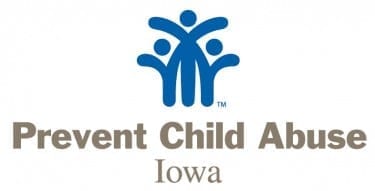Editor’s note: The winter 2014 issue of DMU Magazine explored the long-term effects and high health costs of adverse childhood experiences (ACEs) as shown in numerous studies, beginning with the groundbreaking work of Robert Anda, M.D., and Vincent Felitti, M.D., in 1997. Below is another perspective on addressing the negative physical, social and psychological outcomes of these traumatic childhood events.

Today, the 20-year-old is focused on raising her son, Demarco, whom she had when she was 17. Without a strong parent role model and support network, Ebony has come to rely on a teen parenting program. Each week, a family support worker visits Ebony’s home to talk about how to foster Demarco’s healthy development and to connect Ebony with resources. She can attend a parent support group to talk with other parents about issues and to learn more about parenting.
“I just wanted to get some help from people that knew what they were doing and I knew it was a resource,” she said. “If I ever need something, I had someone I could ask.”
This is one of several projects throughout Iowa that work to prevent child abuse and neglect, three of the eight categories identified in the adverse childhood experiences (ACEs) study conducted in Iowa last year. (In the original ACEs study, child abuse and neglect made up five of the 10 categories.) Services such as home visiting, respite or crisis child care, parent support groups and sexual abuse prevention training work with caregivers to create the safe, nurturing environments children need to thrive. The success of these projects relies on building protective factors in families including nurturing and attachment, resilience, parenting knowledge, social connections and concrete supports, which research shows reduce the likelihood of abuse and neglect.
Community groups, made up of dedicated volunteers and child advocates, drive these efforts throughout Iowa with the support of state-level organizations that provide operational and programming assistance and work to raise understanding and engagement in child abuse prevention among leaders. Through the support of the Iowa Department of Public Health and several other partners, Prevent Child Abuse Iowa has undertaken projects to respond to the Iowa ACEs study findings. Work includes developing two online learning modules, videos featuring personal stories and a partnership with six communities to increase awareness of ACEs and child abuse prevention as an important response.
Driving this movement is a fundamental belief that adverse childhood experiences can be prevented. Almost half of the participants in the Iowa ACEs study reported zero ACEs, and the majority reported one or none. With a commitment to supporting families, communities can build the foundation children need for long-term health, learning, productivity and overall well-being.
What health care providers can do to support child abuse prevention efforts:

Participate – join community groups that bring attention to child abuse prevention and provide supports to families.
Connect – refer families in need of support to resources and services in the community.

